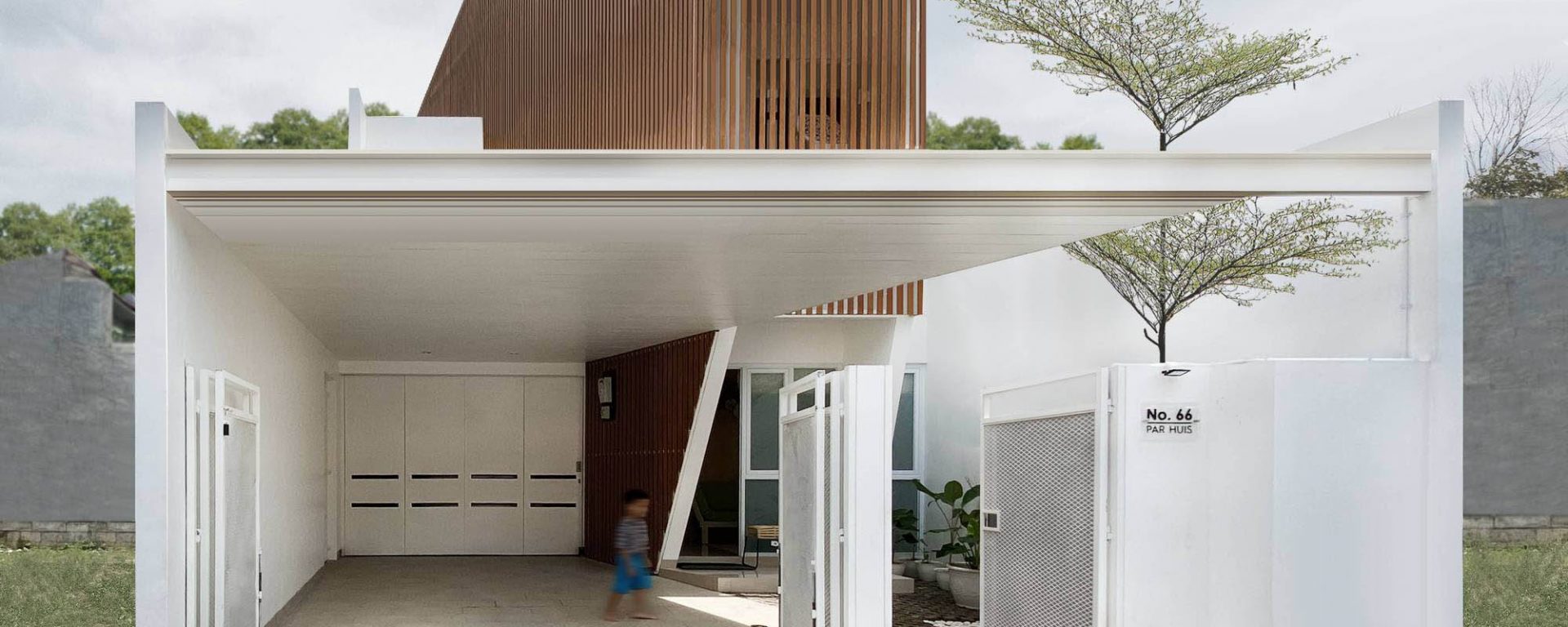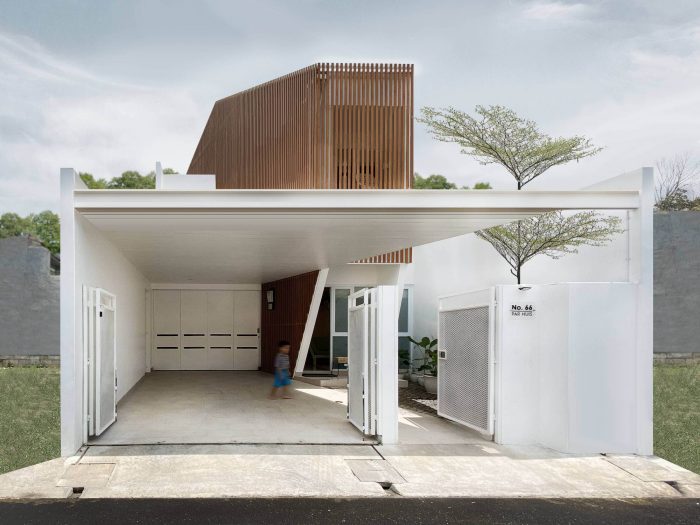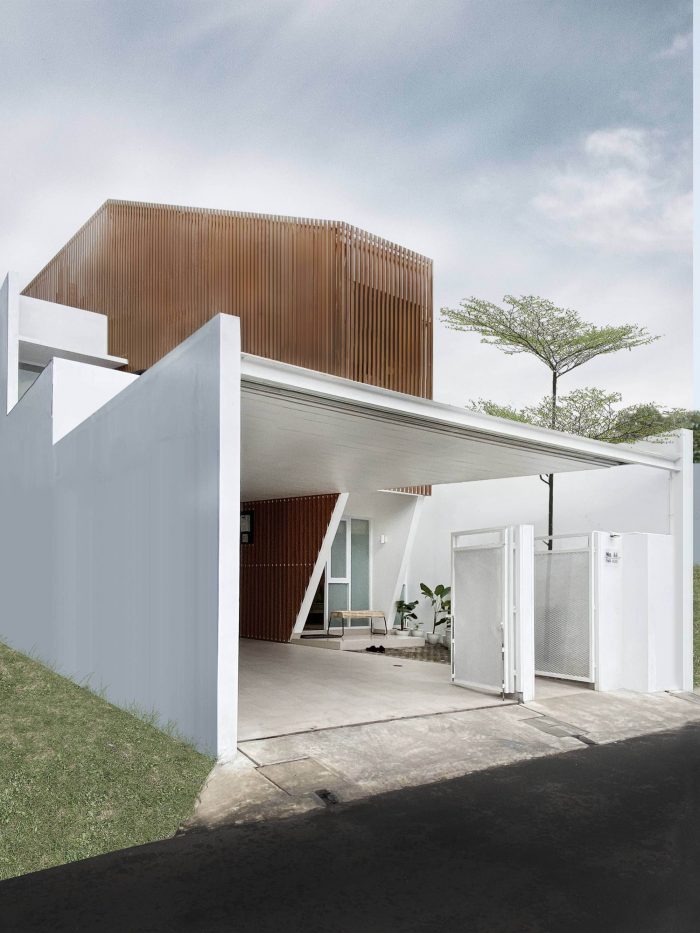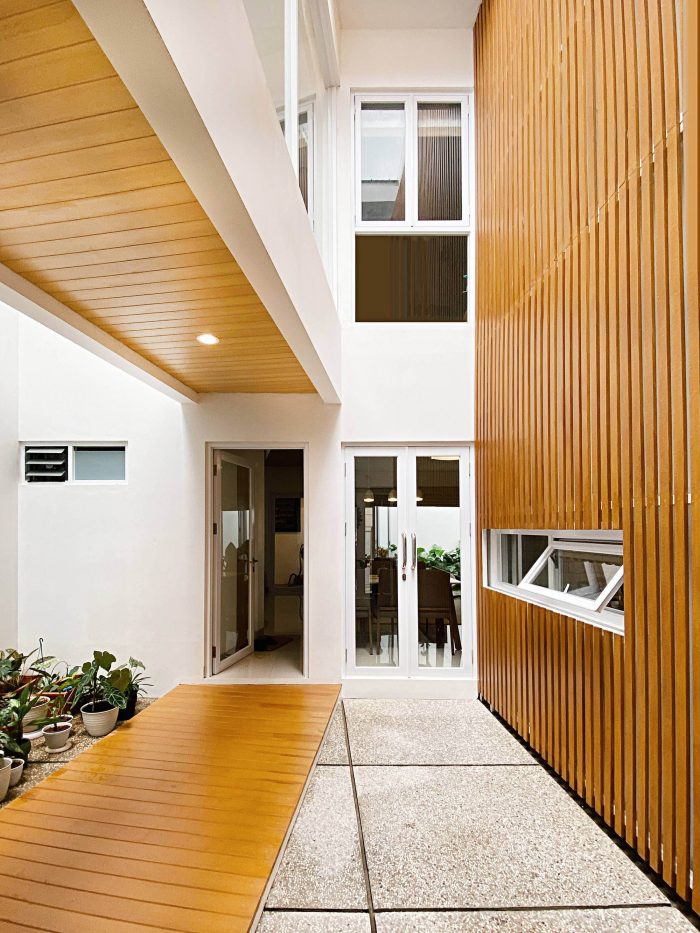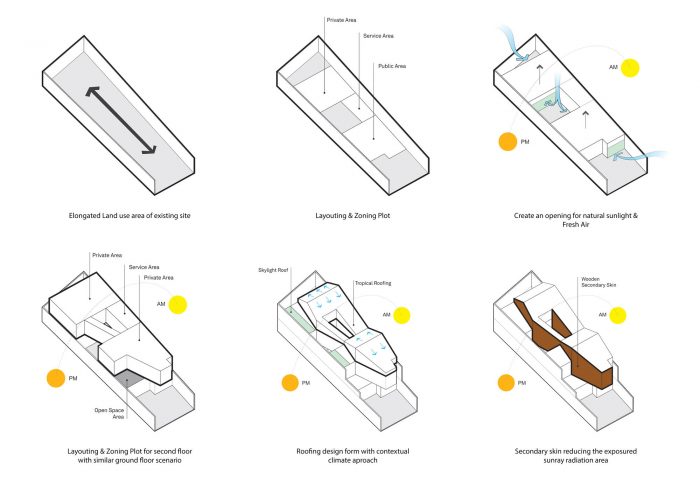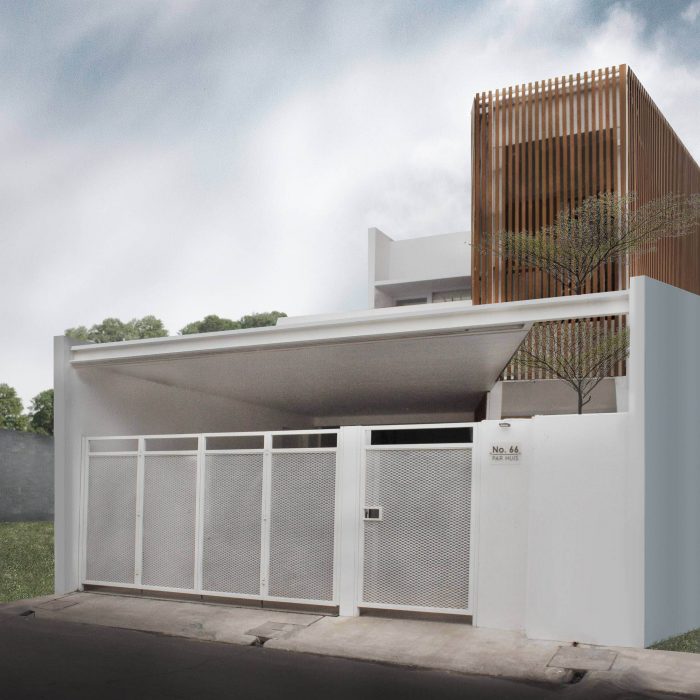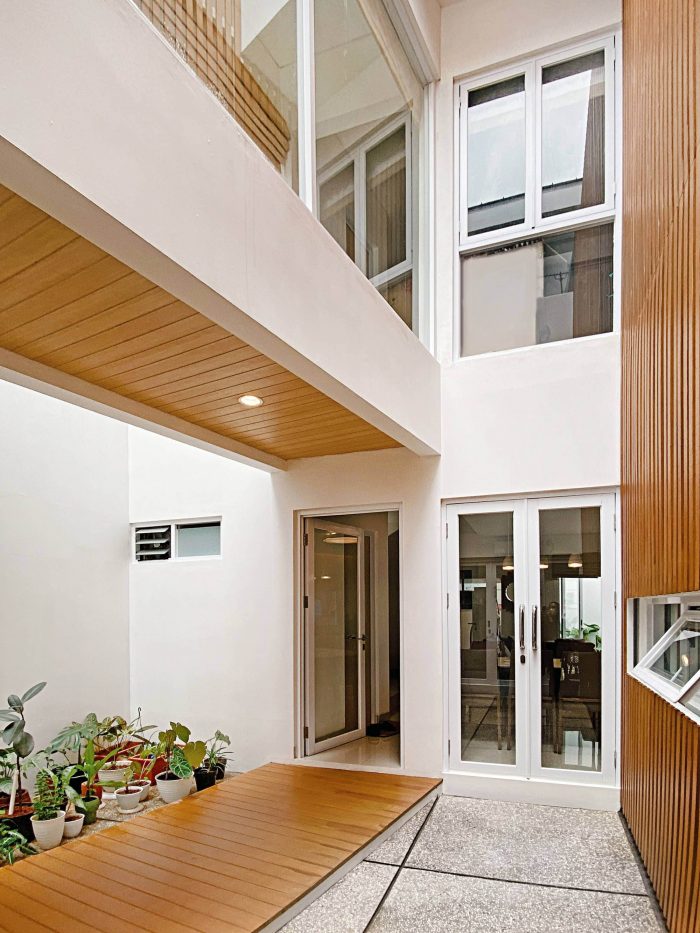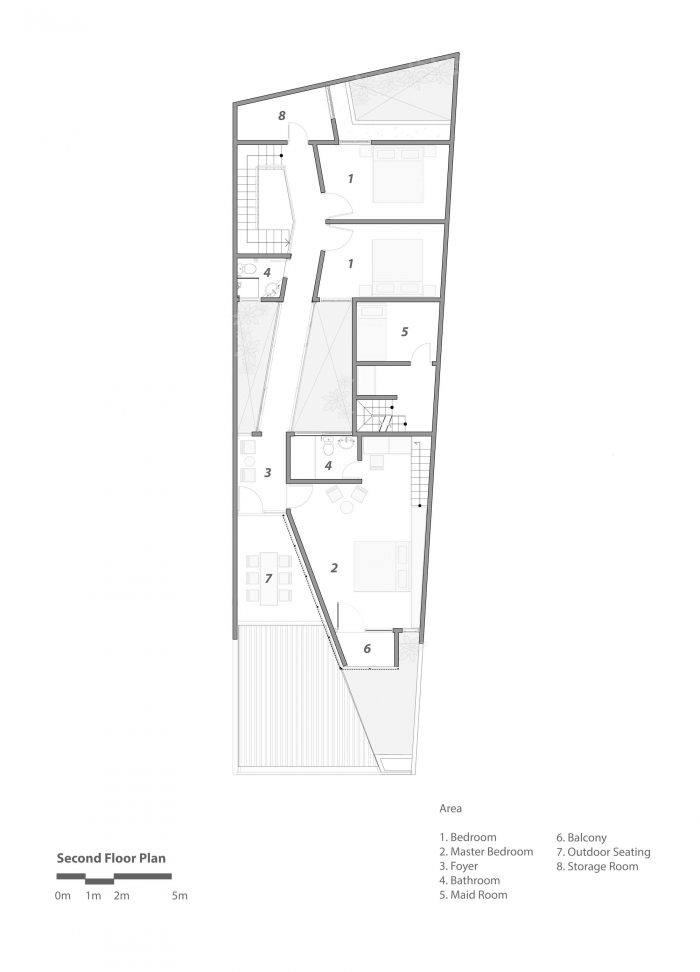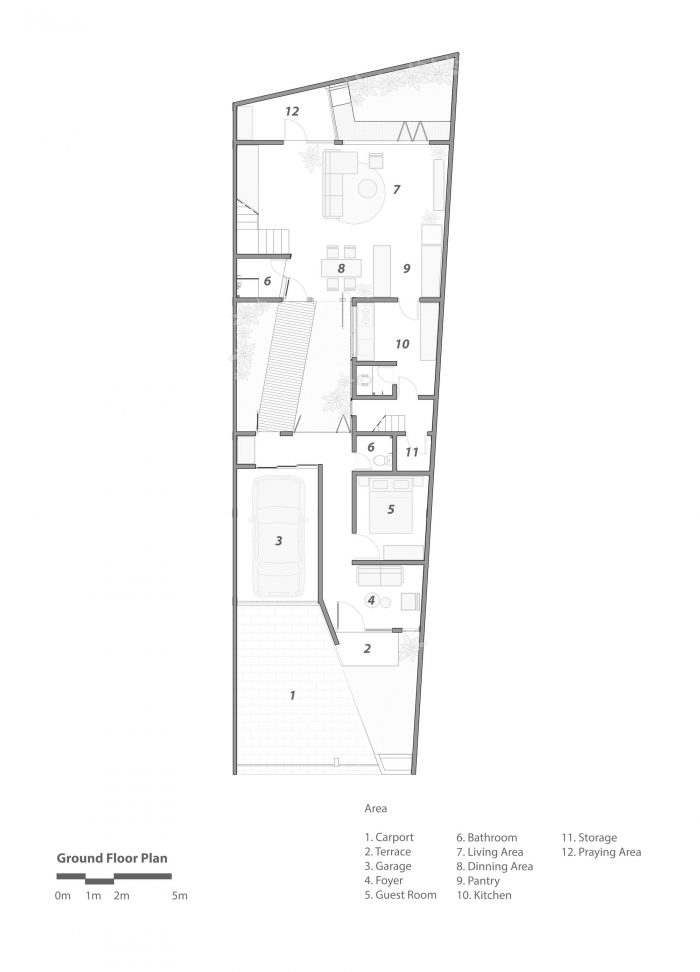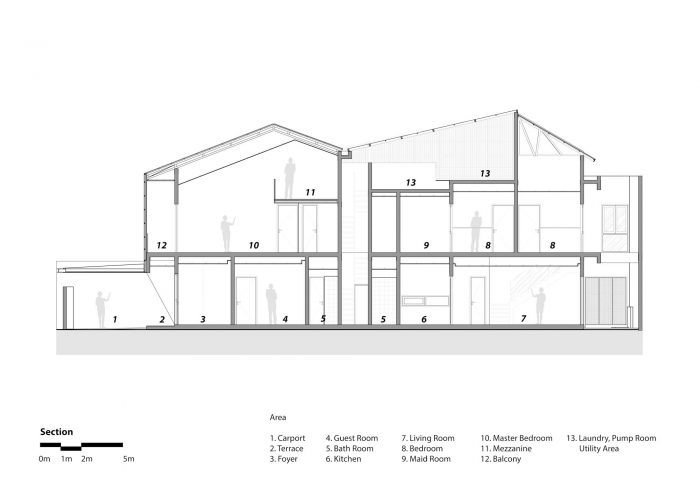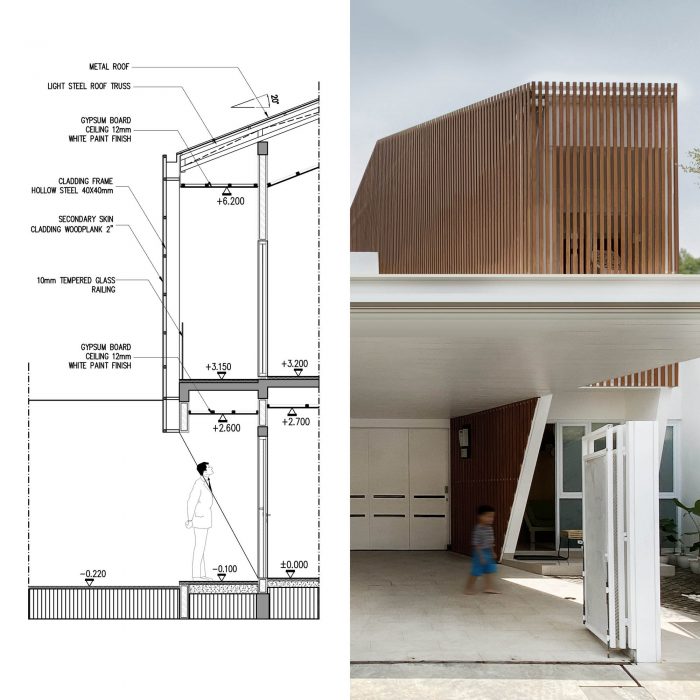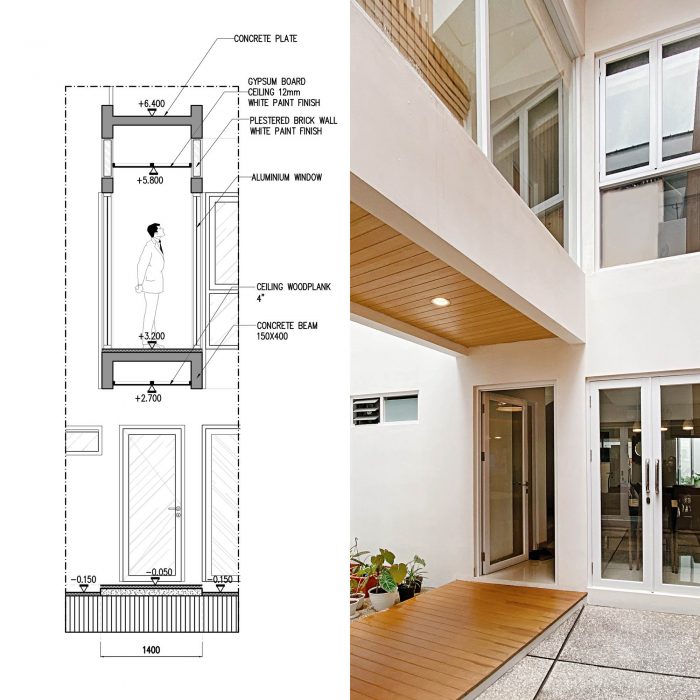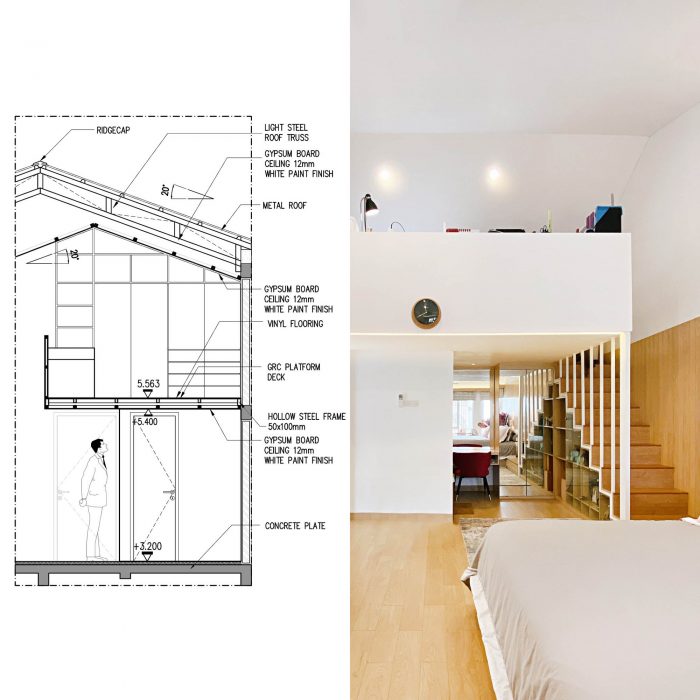Parhuis位于一个狭长的地段,通过将建筑用途分开,明确前公共区域和后私人区域的功能,满足了用户对私人空间的需求。在设计上,东面和西面较长的日照面被认为是一个有潜力的挑战,而不是限制,因此,在西面立面放置了次要的木质外墙,以减少太阳的热量和辐射。次要木皮的动态放置,使得帕尔胡斯这个房子充满了流动和俏皮的空间,由空间元素赋予的转折和惊喜元素创造出来,室内外无缝衔接的背景下,增加了健康和心理健康。
Located in a narrow, elongated lot, Parhuis corresponds the users’ need of having a private space by separating the building purposes with clear function of public area at the front and private area at the back. Having longer side facing east and west sun is seen as a design challenge with potentials rather than as constraints, therefore, secondary wooden skins are placed in the west façade to reduce sun heat and radiation. The dynamic placement of secondary wooden skins making Parhuis, a house full of flowy and playful spaces, created by twist and elements of surprise given by spatial elements, with the context of seamless indoor-outdoor to increase health and mental well-being.
建筑物的整体体量表明,明确的私人、公共和服务区域的空间调整成为该住宅的主要方案,使每项活动不受干扰,特别是在当今家庭仍然很重要的情况下,因为用户往往比以前在家里呆的时间更长。
The overall massing of the buildings denote to a response where clear spatial adjustment of private, public, and service area becomes the main program of the house, having each activity being uninterrupted especially in today’s condition where home remains important as users tend to stay longer at home than before.
房子的程序关系到当前的情况,由于健康和安全,互动是有限的。在Parhuis中,外部隔断也有助于动态地分配自然光,通过体量将分割的程序缝合在一起。Parhuis由两个分离的主建筑体量形成,由一座浮桥连接,前楼作为客人的公共区域,后楼作为私人空间,而内院则留出一个负向开放的空间,让自然界用光、空气、水和植被穿透室内空间。
The house programming relates current situation where interaction is limited due to health and safety. In Parhuis, exterior partitions also help to distribute natural lighting dynamically, sewing the segmented programs in unity by the massing. Parhuis is formed by two separated main building masses joined by a floating bridge, where the front building serves as public area for guests and the back building for private spaces, while the inner courtyard leaves a negative open space for the nature to puncture the interior space with light, air, water, and vegetations.
内院桥也给人一种空间体验,二楼家庭的私密空间,同时顺着阳光的路径,斜向回应轴线的约束。丰富的自然采光和空气流通,使帕尔胡斯成为一个健康的家,同时也通过被动式房屋的方式具有节能优势。此外,#parhuis#的主卧增加了一个夹层,作为工作空间,以温暖的木质元素和明亮的室内空间,节省了在家办公的时间。
The inner courtyard bridge also gives a spatial experience where the private space of the family at the second floor, while responding diagonally against the axial constraint following the sun paths. Filled with abundant natural lighting and air circulation, making Parhuis is a healthy home that also features energy-saving advantages through passive house approach. Additionally, master bedroom of #parhuis is added a mezzanine level for working space, saving time for work-from-home situation with warm wooden elements and bright interior space.
建筑师:Aaksen Responsible Aarchitecture
面积:250平方米
年份:2021年
摄影:Azzahra Dartaman
厂家:Toto, Conwood, Taco HPL
首席建筑师:Yanuar Pratama Firdaus
建筑师 : Gea Sentanu, Azzahra Dartaman
室內設計:Citra Nur Aviany
起草人:Bayu Herdiadi
建筑师:Aaksen Responsible Architecture
城市 : 雅加达
国家:印度尼西亚
Architects: Aaksen Responsible Aarchitecture
Area: 250 m²
Year: 2021
Photographs: Azzahra Dartaman
Manufacturers: Toto, Conwood, Taco HPL
Lead Architects: Yanuar Pratama Firdaus
Architect:Gea Sentanu, Azzahra Dartaman
Interior Design:Citra Nur Aviany
Drafter:Bayu Herdiadi
Architects:Aaksen Responsible Architecture
City:Yakarta
Country:Indonesia

